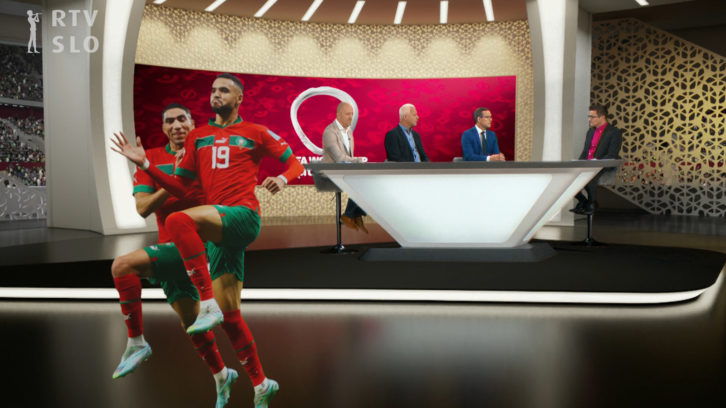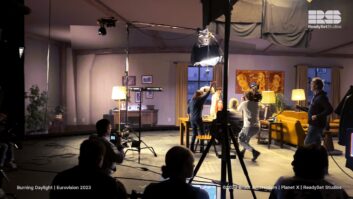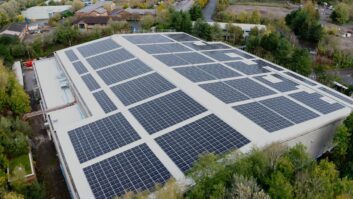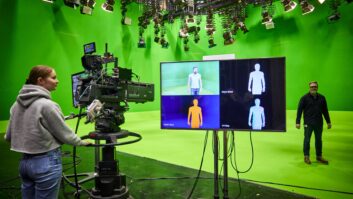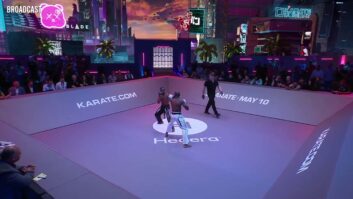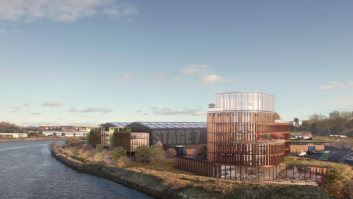Broadcasters in France, Belgium and Slovenia employed technology from Zero Density to power virtual studios as part of their coverage of last month’s FIFA World Cup.
Belgium’s RTBF broadcast live every day from 3-10.30pm during the tournament. The broadcaster decided to set up a portal window LED screen behind its main presenter, which was flanked by two green screens, while standard LED screens were used behind the studio guests. The design and integration were carried out by DreamWall.
The virtual studio was run by three engines, on two RE AMPERE workstations. Two engines are used for the virtual set and one engine for a flycam. To viewers, the hosts appeared to be broadcasting from a photorealistic rooftop in Qatar, with different lighting used to represent daytime, evening, and night.
The virtual camera shots enabled RTBF to move from a studio to stadium, providing a view of all eight football stadiums in Doha. To do this, the team recreated the entire city and all eight stadiums in 3D. They also used augmented reality elements to display scores, player and team statistics, as well as dynamic team lineups on the virtual studio’s LED wall powered by Reality.
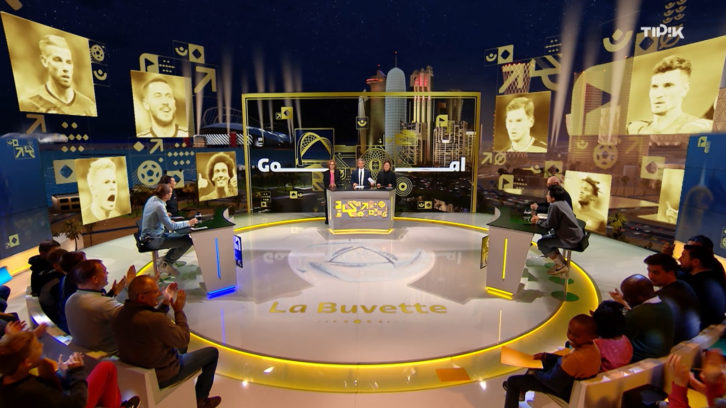
France’s TF1 utilised Reality for its daily World Cup coverage.
The hosts were located on a balcony on the edge of the stadium looking over the playing field. Audiences were able to see the player lineups and game tactics as if they were on the pitch. According to Zero Density, the Flycam feature gave TF1 the ability to go beyond the limitation of their physical location and 360-degree visual storytelling capability.
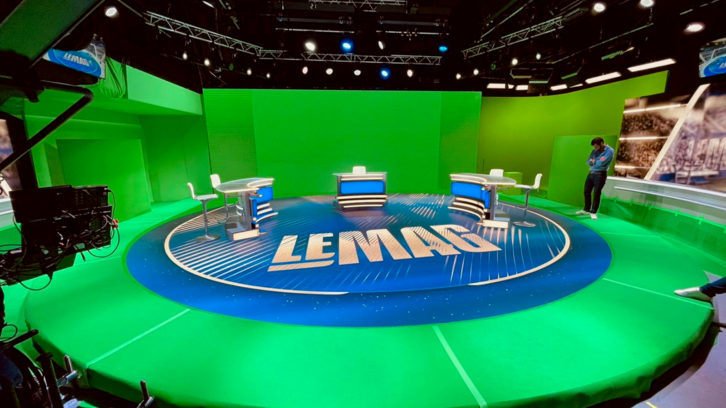
Slovenia’s RTV decided to move its entire studio space to virtual production, which was ready for broadcast in just three weeks.
The company’s regular U-shaped 80m2 cyclorama was extended with an additional flat cyclorama, providing more space for the presenter to move. The shape and colour space conversions were handled by Reality Keyer.
RTV went live every day with three cameras – each of which was linked to one Reality Engine as well as RealityHub to power all the real-time Unreal Engine graphics involved.
